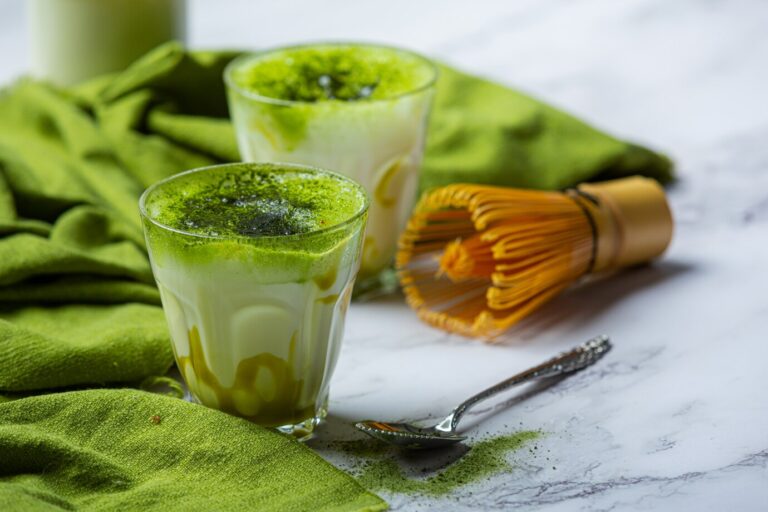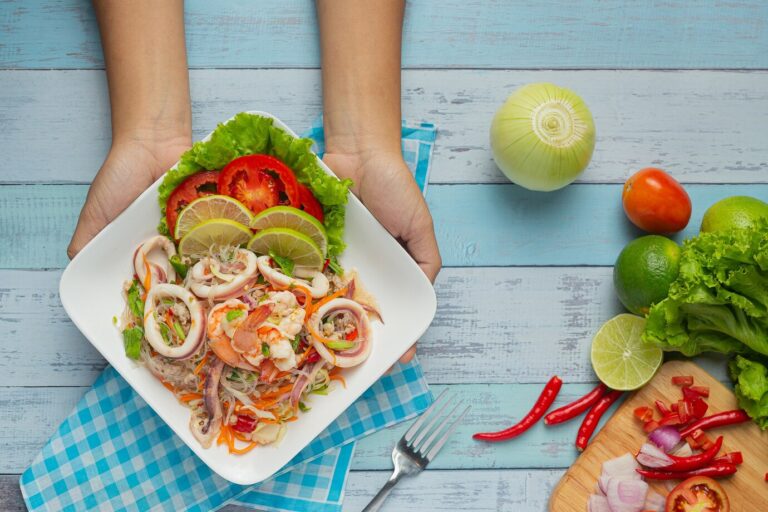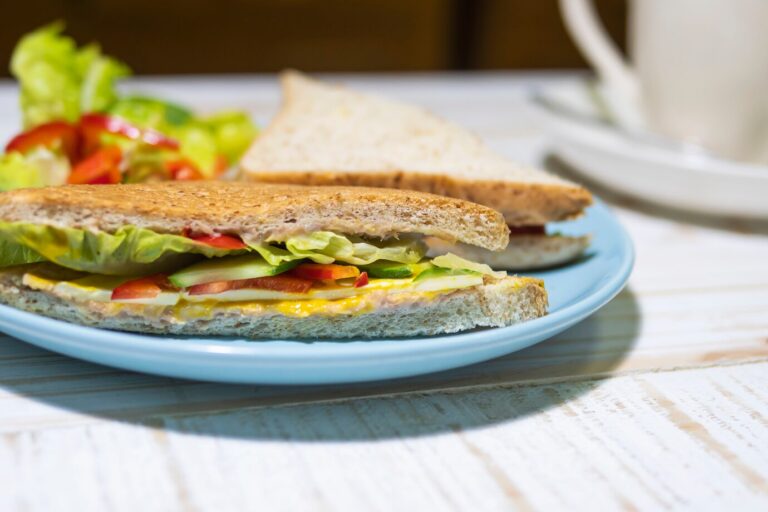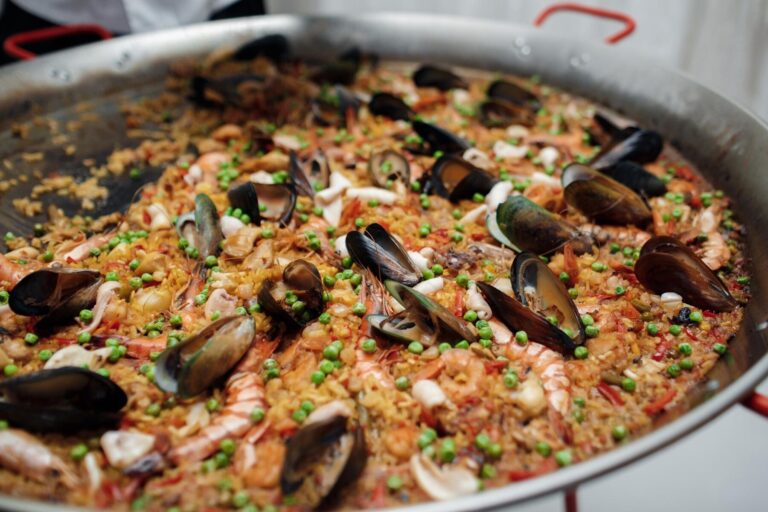Ceviche de Corvina: How 5 Easy Steps Transform Dinner
Have You Ever Wondered How a Simple Twist Can Change Your Dinner?
Do you ever wonder if a few simple steps can turn your everyday meal into something exciting and fresh? What if you could make dinner fun, tasty, and healthy all at once? In this post, we will show you how to make ceviche de corvina with five easy steps that can transform your dinner in no time! Get ready to learn a recipe that is as easy as it is delicious.
Overview
Ceviche de corvina is a special dish that brings a burst of fresh flavors to your table. This recipe is not only healthy but also quick and fun to make. With only a few simple steps, you can create a meal that feels fancy and tastes amazing.
- Time to Make: About 30 minutes to 1 hour.
- Difficulty Level: Easy – even beginners can make it!
- Flavor: A mix of zesty, tangy, and refreshing tastes.
- Health Benefits: Packed with vitamins, lean protein, and omega-3 fatty acids.
This recipe is special because it uses fresh ingredients and a simple method that brings out the best flavors. It’s a perfect dish if you want to impress your family or enjoy a light meal on a warm day.
Essential Ingredients
To make a delicious ceviche de corvina, you need to gather a few key ingredients. Each one plays a special role in creating the perfect flavor. Here is a list of what you need and why they are important:
- Fresh Corvina (Sea Bass)
The star of the recipe! Fresh corvina has a delicate taste and firm texture. If you cannot find corvina, try using snapper or tilapia as a substitute. - Lime Juice
Lime juice is very important because it “cooks” the fish without heat. The acid in the lime changes the texture of the fish and gives it a tangy flavor. You can also mix lemon juice with lime if you want a slightly different taste. - Red Onion
Thinly sliced red onions add a crisp crunch and a bit of spice. They also bring a lovely color contrast to the dish. White onions can work too if you prefer a milder flavor. - Fresh Cilantro
Cilantro gives the dish a burst of green and a fresh, herby flavor. If you are not a fan of cilantro, you can try parsley for a milder taste. - Tomatoes
Chopped tomatoes add a juicy texture and a sweet tang. They are not in every ceviche recipe, but they add a nice burst of color and flavor. - Salt and Pepper
These basic seasonings help bring all the flavors together. Adjust them to taste. - Optional: Avocado, Cucumber, or Chili Peppers
Adding avocado makes the dish creamier, cucumber adds crunch, and chili peppers give it a spicy kick. You can add one or more of these based on your taste preference.
Remember, each ingredient helps make the ceviche de corvina fresh and tasty. You can swap out some ingredients if you need to, but using the fresh versions will give you the best result.
Step-by-Step Instructions
Follow these simple steps to prepare your ceviche de corvina. Each step is easy and fun, so let’s get started!
Prepare the Fish
- Clean and Cut the Fish
Rinse the fresh corvina under cold water. Pat dry with paper towels. Cut the fish into small, bite-sized pieces. It is best to cut against the grain for a tender texture. - Marinate in Lime Juice
Place the fish pieces in a glass or ceramic bowl. Pour enough lime juice to cover the fish completely. The acid in the lime juice will gently “cook” the fish. Let it marinate for about 15-20 minutes. You will see the color of the fish change as it cooks.
Slice the Vegetables
- Prepare the Red Onion
Peel and slice the red onion very thinly. Thin slices help the flavor spread evenly in the dish. - Chop the Tomatoes
Remove the seeds and chop the tomatoes into small cubes. This step will add juiciness and sweetness to the dish. - Cilantro and Other Additions
Roughly chop fresh cilantro. If you are using chili peppers, slice them thinly. You can also dice avocado or cucumber if you like.
Mix the Ingredients
- Combine the Marinated Fish and Veggies
Once the fish is “cooked” in the lime juice, add the sliced red onions, tomatoes, and cilantro to the bowl. Stir gently to combine all the flavors. - Season
Sprinkle salt and pepper to taste. Mix again gently. Taste and adjust the seasonings as needed. This is your chance to add a little more salt or a dash of extra lime juice if you like.
Let the Flavors Marry
- Rest the Mixture
Allow the ceviche to sit for another 5-10 minutes. This resting time lets the flavors mix well. You can cover the bowl with a clean cloth or plastic wrap to keep it fresh. - Optional Chill
If you like a colder dish, put the ceviche in the refrigerator for 10 minutes before serving. This makes it even more refreshing on a hot day.
Final Touches and Serve
- Add Extra Ingredients
If you are using avocado, gently mix it into the ceviche just before serving to avoid mushiness. - Garnish
Sprinkle a little extra cilantro or even some extra lime zest on top for a bright finish. - Serve Immediately
Enjoy your ceviche de corvina right away. Serve it in a bowl or on small plates for a party or family meal.
Assembly: Building the Perfect Ceviche Plate
Assembling your ceviche de corvina is almost as fun as making it. Here’s how to put it all together for the best presentation:
- Base Layer
Start by placing a bed of fresh greens like lettuce or arugula on your serving plate. This adds a crisp texture and a pop of color. - Layer the Ceviche
Spoon the ceviche de corvina over the greens. Make sure to include a good mix of fish and vegetables. - Add Garnishes
Top with extra cilantro, a slice of lime, or even a few edible flowers if you want to impress your guests. - Final Presentation
Serve with a side of toasted bread or tortilla chips. A small bowl of extra lime juice or hot sauce can be a fun addition for those who like more zest.
Storage and Preparation Tips
To keep your ceviche de corvina fresh and tasty, follow these storage and preparation tips:
- Storage in the Refrigerator
Store any leftover ceviche in an airtight container. It is best eaten within 24 hours. The lime juice will continue to “cook” the fish if left too long, changing the texture. - Serving Cold
Always serve ceviche chilled. If it warms up, the flavors might not be as bright and refreshing. - Prep Ahead
You can chop all your vegetables and prepare the fish ahead of time. Wait to mix them until just before serving. This keeps everything fresh and crunchy. - Substitute Ideas
If you want to try something new, use different citrus juices like a mix of lemon and orange. You can also add a dash of olive oil for a smoother texture. - Reheating
Do not reheat ceviche. The unique “cooking” process is all done with lime juice, and heating it will ruin the delicate flavors and texture.
Recipe Variations: Making It Your Own
Ceviche de corvina is a versatile dish, and you can change it up to match your taste or what you have on hand. Here are some creative variations:
- Spicy Ceviche
Add finely chopped chili peppers or a dash of hot sauce to give your ceviche a spicy kick. This is perfect if you enjoy a bit of heat. - Tropical Twist
Mix in some diced mango or pineapple for a sweet and tangy flavor. This variation adds a tropical vibe to your meal. - Extra Crunch
Add diced cucumber or jicama for extra crunch. These ingredients give the ceviche a refreshing texture and extra vitamins. - Creamy Addition
Stir in diced avocado just before serving. The creamy texture of the avocado pairs wonderfully with the tangy lime and fresh fish. - Herb Boost
Try adding other fresh herbs like basil or mint for a unique twist. They can add unexpected layers of flavor and aroma. - Different Fish
While corvina is ideal, you can try using other types of white fish like snapper or tilapia. Each fish brings a slightly different flavor to the dish.
Each of these variations lets you experiment with the recipe. The basic method remains the same, but a few changes can make your ceviche de corvina feel brand new.
Conclusion: Enjoy and Experiment
Ceviche de corvina is more than just a meal—it is a journey of flavors that is simple enough for any day. With five easy steps, you can create a dish that is healthy, refreshing, and exciting. The bright flavors of lime, the tenderness of fish, and the crunch of fresh vegetables come together to make something truly special.
Don’t be afraid to experiment with this recipe. Try different ingredients, adjust the seasonings, and make the dish your own. Enjoy the process and share your creation with friends and family. Each time you make it, you might discover a new twist that makes it even better.
So, next time you are looking for something quick and delicious, remember this easy recipe. Dive into the fresh world of ceviche de corvina and let your taste buds dance with delight. Happy cooking!
Frequently Asked Questions
How long does the fish need to marinate?
For the best flavor and texture, marinate the fish in lime juice for about 15-20 minutes. This gives enough time for the lime to “cook” the fish without making it too firm.
Can I use frozen fish?
Fresh fish is best for this recipe. However, if you only have frozen fish, make sure to thaw it completely in the refrigerator before use. Pat it dry before cutting into pieces.
Is ceviche de corvina safe to eat without heat?
Yes! The acid in the lime juice acts as a natural “cooking” method, which is safe if the fish is very fresh. Always use the freshest fish possible and keep the dish cold to reduce any risk.
Can I substitute other ingredients?
Absolutely! If you don’t have corvina, try using snapper, tilapia, or another mild white fish. You can also substitute red onions with white onions and use lemon juice if you prefer.
What are the health benefits of this recipe?
Ceviche de corvina is high in protein and omega-3 fatty acids, which are good for your heart. The fresh vegetables add vitamins and fiber, making it a healthy and balanced meal.
How do I store leftover ceviche?
Store any leftovers in an airtight container in the refrigerator. It is best consumed within 24 hours. The flavors may change slightly after a day, but it will still be tasty.
Can I make this dish ahead of time for a party?
Yes, you can prep most of the ingredients ahead of time. Keep the fish marinated and the vegetables chopped separately, then mix them just before serving. This way, you preserve the texture and flavor.







